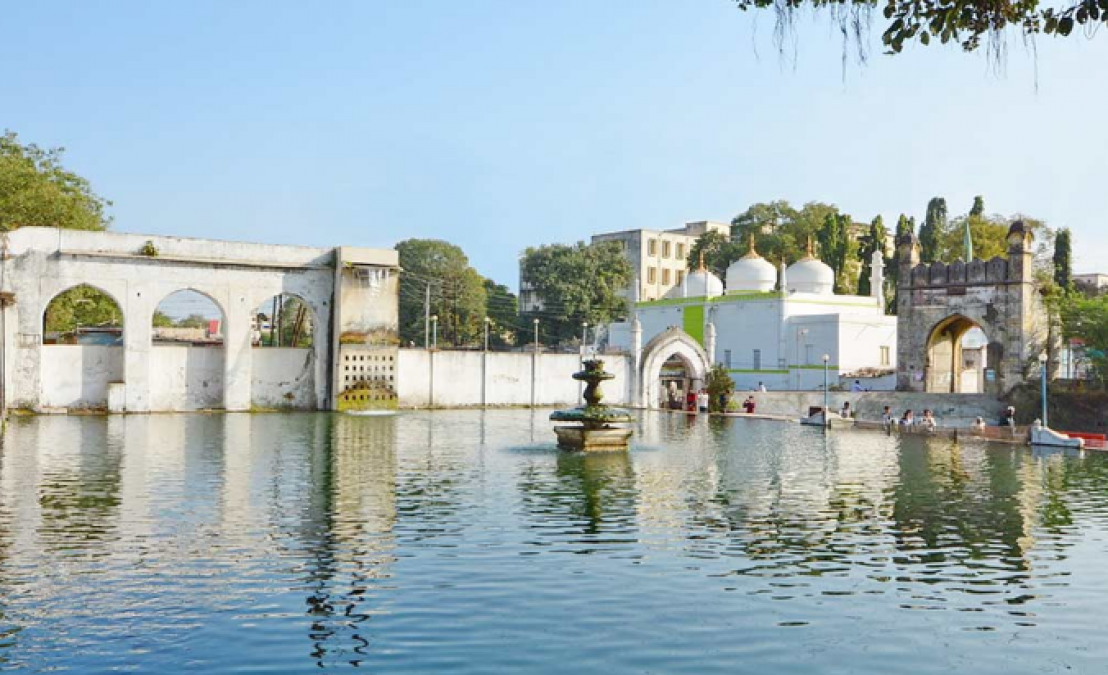
Aurangabad, a city steeped in history and culture, is located in the Indian state of Maharashtra. Renowned for its architectural wonders and historical significance, it attracts tourists from all over the world. Named after the Mughal Emperor Aurangzeb, the city serves as a gateway to some of India's most remarkable heritage sites. In this article, we will delve into the captivating history of Aurangabad and highlight the top 10 places to visit in this enchanting city.
History of Aurangabad:
Aurangabad holds a prominent place in Indian history, dating back to ancient times. The region witnessed the rule of several dynasties, contributing to its diverse cultural heritage. It served as an important political and cultural center during the Satavahana and Vakataka dynasties. Later, in the 14th century, the city came under the reign of the Delhi Sultanate. It was subsequently ruled by the Bahmani Sultanate and the Mughals, before falling under British control in the 19th century.
Top 10 Places to Visit in Aurangabad:
Bibi Ka Maqbara:
Also known as the "Tomb of the Lady," Bibi Ka Maqbara is a splendid mausoleum dedicated to Rabia-ul-Daurani, the wife of Emperor Aurangzeb. Constructed in the 17th century, this magnificent structure bears a striking resemblance to the iconic Taj Mahal, with its intricate Mughal architecture and serene surroundings. It is a must-visit destination for history enthusiasts and architecture aficionados.
Ajanta Caves:
Listed as a UNESCO World Heritage Site, the Ajanta Caves are a breathtaking collection of 30 rock-cut Buddhist caves. Dating back to the 2nd century BCE, these caves showcase exquisite murals, sculptures, and ancient scriptures. Exploring the Ajanta Caves offers a glimpse into the artistic prowess and spiritual significance of ancient India.
Ellora Caves:
Another UNESCO World Heritage Site, the Ellora Caves, is an extraordinary complex of rock-cut temples representing Hindu, Buddhist, and Jain faiths. These caves, carved out of solid basalt rock, are known for their architectural brilliance and intricate detailing. The most notable cave is the Kailasa Temple, dedicated to Lord Shiva, which is considered the largest monolithic structure in the world.
Daulatabad Fort:
Situated atop a hill, the Daulatabad Fort is a medieval marvel that witnessed several dynastic battles and architectural transformations. Originally built by the Yadava dynasty, it was later captured by various rulers, including the Delhi Sultanate and the Mughals. The fort offers panoramic views of the surrounding landscape and houses remarkable structures like the Chand Minar and the Chini Mahal.
Panchakki:
Panchakki, meaning "water mill," is an intriguing historical complex that served as an ingenious water-powered flour mill in the medieval era. Built by a Sufi saint, the structure also encompasses a tomb and a mosque. It is a unique architectural site that showcases the innovative engineering techniques employed during that era.

Aurangabad Caves:
The Aurangabad Caves are a group of 12 Buddhist caves carved out of soft basalt rock. Dating back to the 6th and 7th centuries, these caves exhibit intricate carvings, sculptures, and beautifully crafted pillars. The serene surroundings make it an ideal spot for introspection and relaxation.
Jayakwadi Dam:
A visit to Aurangabad is incomplete without exploring the serene Jayakwadi Dam. Built across the Godavari River, this dam is not only a source of irrigation but also a picturesque location for nature lovers. The dam's sprawling reservoir offers a serene ambiance, perfect for boating and bird-watching.
Siddharth Garden and Zoo:
For those seeking a tranquil retreat amidst nature, Siddharth Garden and Zoo is a delightful destination. It houses a wide variety of flora, including rare plant species, along with a well-maintained zoo that is home to diverse animal species. The garden provides a refreshing escape and is an ideal spot for a leisurely stroll.
Jama Masjid:
Constructed during the Mughal era, Jama Masjid is a grand mosque known for its architectural grandeur and religious significance. It reflects the rich cultural amalgamation of Indian and Islamic architectural styles. The mosque's serene ambiance and intricate design elements make it a significant place of worship.
Ghrishneshwar Temple:
Dedicated to Lord Shiva, the Ghrishneshwar Temple is one of the 12 Jyotirlingas in India. This ancient temple is revered by devotees and showcases remarkable architectural craftsmanship. It is believed to be the last or the 12th Jyotirlinga established by Lord Shiva himself.
Aurangabad stands as a testament to the rich history and cultural heritage of India. From its awe-inspiring caves and forts to its magnificent monuments, the city offers a captivating journey through time. Exploring the top 10 places mentioned above provides a glimpse into Aurangabad's glorious past and architectural brilliance. Embark on a mesmerizing adventure to this remarkable city, and you will undoubtedly be enthralled by its historical wonders.
Exploring Kerala: A Journey Through Time and Beauty
Discover Munnar's Breathtaking Beauty And Rich History: Top 5 Places To Visit
Unveiling the Spectacular: Discover the Most Captivating Destinations Around the World